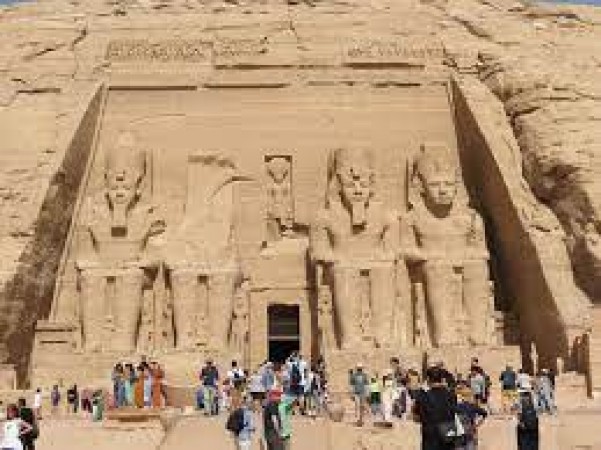
Nestled on the banks of the Nile River in southern Egypt lies a remarkable historical treasure - the ancient Temples of Abu Simbel. Built during the reign of Pharaoh Ramesses II in the 13th century BC, these awe-inspiring structures are a testament to Egypt's rich cultural heritage. In this article, we embark on a journey to rediscover the magnificence and mysteries of the Hidden Temple of Abu Simbel.
Abu Simbel: A Brief History
Abu Simbel, also known as the "Temple of Ramesses, Beloved by Amun," comprises two massive rock temples that were hewn into the mountainside. The construction of these temples was commissioned by Pharaoh Ramesses II to demonstrate his power and divine connection with the gods.
The Temples of Ramesses II
The Great Temple of Abu Simbel
The Great Temple stands as an imposing monument, dedicated to the gods Amun, Ra-Horakhty, and Ptah. The most remarkable feature of this temple is the four colossal statues of Ramesses II seated on his throne, each standing at a height of 20 meters.
The Small Temple of Abu Simbel
The Small Temple, though smaller in scale, is no less captivating. It is dedicated to Ramesses II's beloved wife, Queen Nefertari, and the goddess Hathor. The facade showcases six statues, four of which depict Ramesses II and two of Nefertari.
The Relocation of Abu Simbel
With the rising waters of the Nile threatening to submerge these historic temples due to the construction of the Aswan High Dam, an international effort was made to relocate the entire complex to higher ground in the 1960s.
Rediscovering the Hidden Temple
Despite their relocation, the Temples of Abu Simbel have managed to retain their ancient allure. Tourists and historians alike are drawn to their enigmatic presence, wondering about the secrets they hold.
The Architecture and Art of Abu Simbel
Majestic Facades
The temple facades are adorned with intricate carvings and stunning reliefs that depict scenes of battle, religious ceremonies, and the pharaoh's victories. These artistic masterpieces offer a glimpse into the ancient world's grandeur.
Interior Grandeur
Venturing inside, visitors are greeted with a series of vast halls and chambers. The inner sanctums are embellished with colorful frescoes that narrate ancient Egyptian myths and religious rituals.
The Sun Festival
Twice a year, during the Sun Festival, a mesmerizing phenomenon occurs. The temple's interior is illuminated by the sun's rays, illuminating the statues of Amun, Ra-Horakhty, and Ramesses, while Ptah, the god of darkness, remains in the shadows.
Legends and Myths
The Alignment Phenomenon
The Sun Festival aligns with astronomical precision, showcasing the advanced astronomical knowledge possessed by ancient Egyptians.
Nefertari's Temple
Queen Nefertari's temple is a tribute to the influential role of women in ancient Egypt and symbolizes the importance of love and devotion.
The Myth of Eternal Darkness
Legend has it that during the temple's relocation, a sacred artifact was lost, and it is believed that this loss has brought eternal darkness upon those who disrespect the temple's sanctity.
The Importance of Abu Simbel
The Temples of Abu Simbel hold immense significance not only as architectural marvels but also as a testament to the ancient civilization's religious beliefs and cultural practices.
Challenges in Preservation
Preserving these ancient structures against the test of time, environmental factors, and tourism remains an ongoing challenge for Egypt's authorities and UNESCO.
Modern-Day Tourism at Abu Simbel
Today, Abu Simbel welcomes tourists from across the globe who come to witness this living heritage of Egypt.
How to Visit Abu Simbel
To visit Abu Simbel, one can take a flight from Cairo or Aswan to the Abu Simbel Airport. Guided tours and cruises on the Nile are also popular options. The Temples of Abu Simbel stand as an epitome of human achievement, a testimony to ancient ingenuity, and an enduring reminder of Egypt's glorious past. Visiting these temples is a profound and transformative experience that connects modern-day travelers to the mystique and splendor of an era long gone.
Iraq condemns the most recent Copenhagen Qur'an burning
Intrigue and Devotion: Understanding the Secretive Gods of Hindu Faith